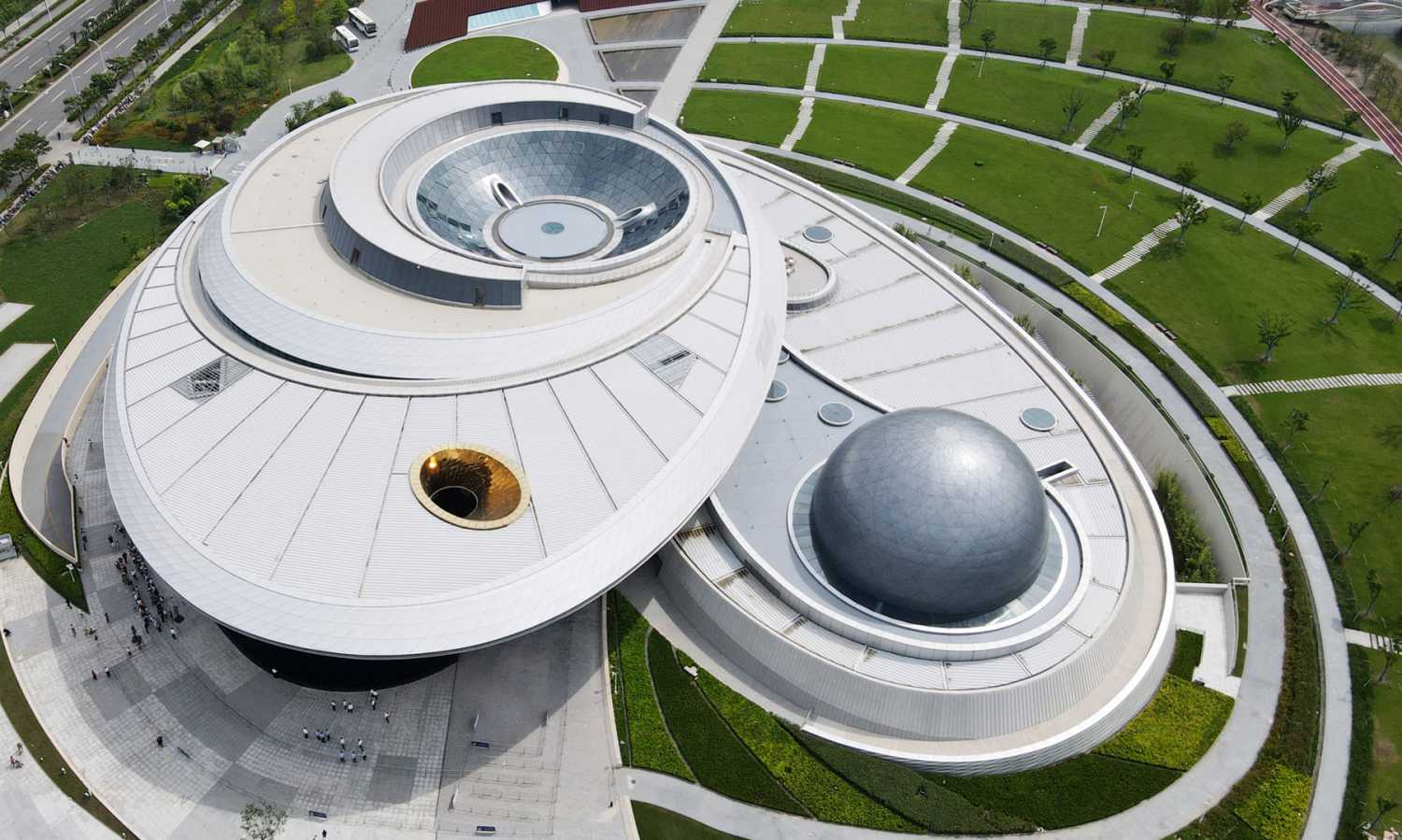Merging+Pyramix stars in Shanghai Planetarium
- Details

With the vision of "shaping a complete view of the universe", Shanghai Planetarium strives to stimulate people's curiosity, encourage them to appreciate the starry sky, understand the universe and think about the future. The main exhibition area includes three parts: Homeland, Universe and Journey, which show a panoramic view of the vast universe, create a multi-sensory exploration journey to help the audience shape a complete view of the universe.
The What If theatre is located in the Universe exhibition area and uses a highly immersive 360-degree circular screen with 7.1.4 3D immersive sound to create an enveloping universe for the audience. Shanghai Magic Digital Creative Technology Co (Magic Digital) undertook the task of audio and video design and production for the immersive experience of the theatre.
The 7.1.4 speaker layout of the theatre is tailor-made for the architectural structure and sound field of the theatre and does not meet any existing audio production standards (such as Dolby Atmos or Auro 3D). It is a typical "user-defined" environment. This layout posed a problem for Magic Digital. At the beginning of demo production, whenever sound effects producers took audio files mixed in a standard surround sound recording studio and played them in situ, they were always "very different" from what they heard during production due to the different placement of the speakers.
The sound reinforcement system of the theatre is an audio network based on the Dante protocol. Magic Digital uses the Pyramix MassCore audio workstation system based on the Ravenna protocol as the core of audio production with a MERGINHG+HAPI handling the outputs. Through the AES67 protocol, the two are successfully connected on-site in Dante Controller. In this way, the theatre speakers become monitor speakers for the sound effects production.
The sound effect producer uses the ‘user-defined’ bus function in Pyramix to input the position coordinates of the live speakers into the software one by one, so that in the Pyramix audio workstation, they have a 3D immersion that is exactly the same as the live speaker layout and position.
Now, the theatre has become a production environment for the mixers. Through the processing of more than 100 audio tracks and dozens of effect plug-ins, the sound effect production masters of Magic Digital, a 12-channel 7.1.4 3D immersive sound file of the What If theatre version of the Shanghai Planetarium was finally completed. The finished immersive sound file perfectly fits the live acoustic conditions and speaker layout to achieve a satisfactory 3D experience.
















